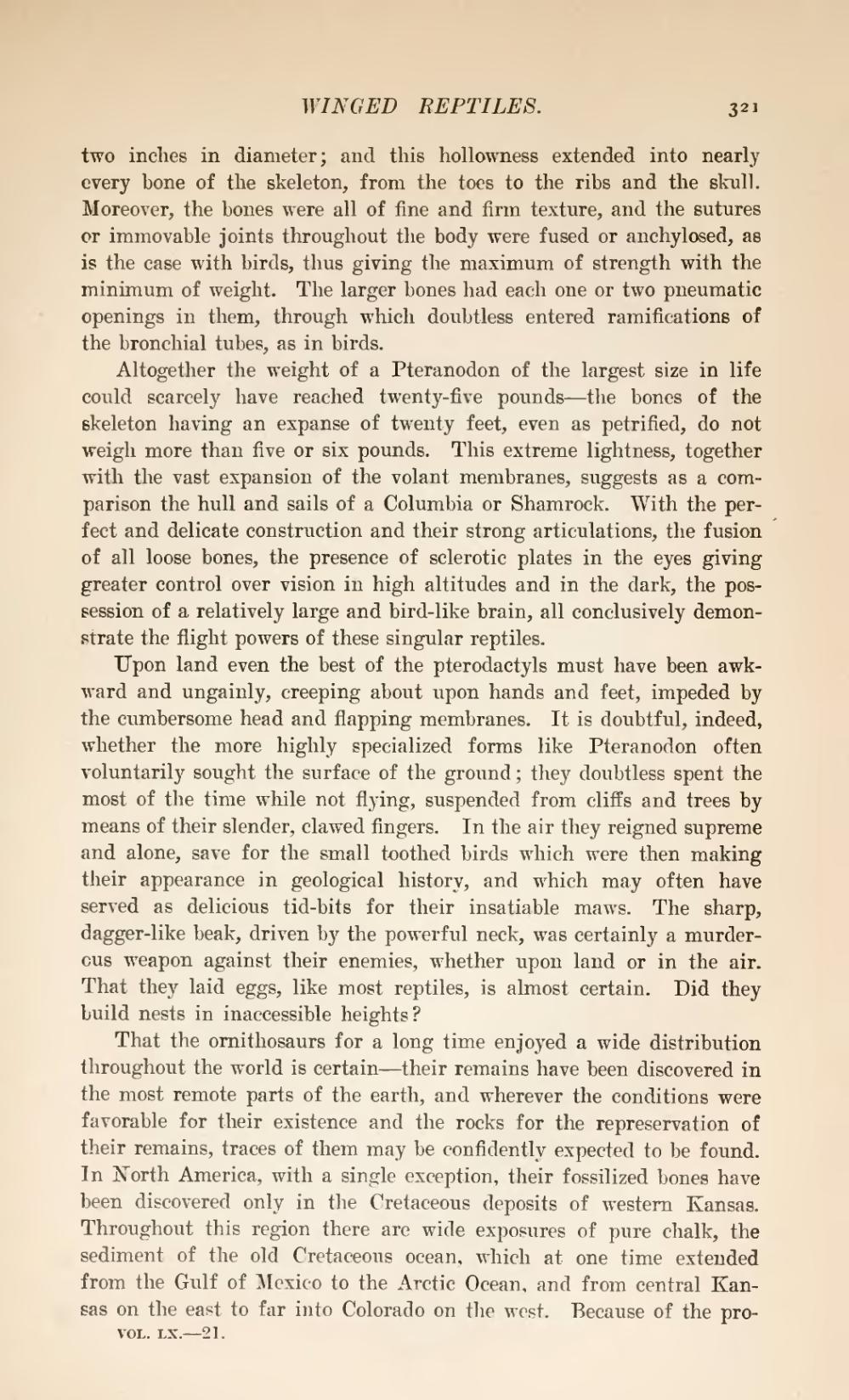two inches in diameter; and this hollowness extended into nearly every bone of the skeleton, from the toes to the ribs and the skull. Moreover, the bones were all of fine and firm texture, and the sutures or immovable joints throughout the body were fused or anchylosed, as is the case with birds, thus giving the maximum of strength with the minimum of weight. The larger bones had each one or two pneumatic openings in them, through which doubtless entered ramifications of the bronchial tubes, as in birds.
Altogether the weight of a Pteranodon of the largest size in life could scarcely have reached twenty-five pounds—the bones of the skeleton having an expanse of twenty feet, even as petrified, do not weigh more than five or six pounds. This extreme lightness, together with the vast expansion of the volant membranes, suggests as a comparison the hull and sails of a Columbia or Shamrock. With the perfect and delicate construction and their strong articulations, the fusion of all loose bones, the presence of sclerotic plates in the eyes giving greater control over vision in high altitudes and in the dark, the possession of a relatively large and bird-like brain, all conclusively demonstrate the flight powers of these singular reptiles.
Upon land even the best of the pterodactyls must have been awkward and ungainly, creeping about upon hands and feet, impeded by the cumbersome head and flapping membranes. It is doubtful, indeed, whether the more highly specialized forms like Pteranodon often voluntarily sought the surface of the ground; they doubtless spent the most of the time while not flying, suspended from cliffs and trees by means of their slender, clawed fingers. In the air they reigned supreme and alone, save for the small toothed birds which were then making their appearance in geological history, and which may often have served as delicious tid-bits for their insatiable maws. The sharp, dagger-like beak, driven by the powerful neck, was certainly a murderous weapon against their enemies, whether upon land or in the air. That they laid eggs, like most reptiles, is almost certain. Did they build nests in inaccessible heights?
That the ornithosaurs for a long time enjoyed a wide distribution throughout the world is certain—their remains have been discovered in the most remote parts of the earth, and wherever the conditions were favorable for their existence and the rocks for the represervation of their remains, traces of them may be confidently expected to be found. In North America, with a single exception, their fossilized bones have been discovered only in the Cretaceous deposits of western Kansas. Throughout this region there are wide exposures of pure chalk, the sediment of the old Cretaceous ocean, which at one time extended from the Gulf of Mexico to the Arctic Ocean, and from central Kansas on the east to far into Colorado on the west. Because of the pro-
vol. lx.—21.
